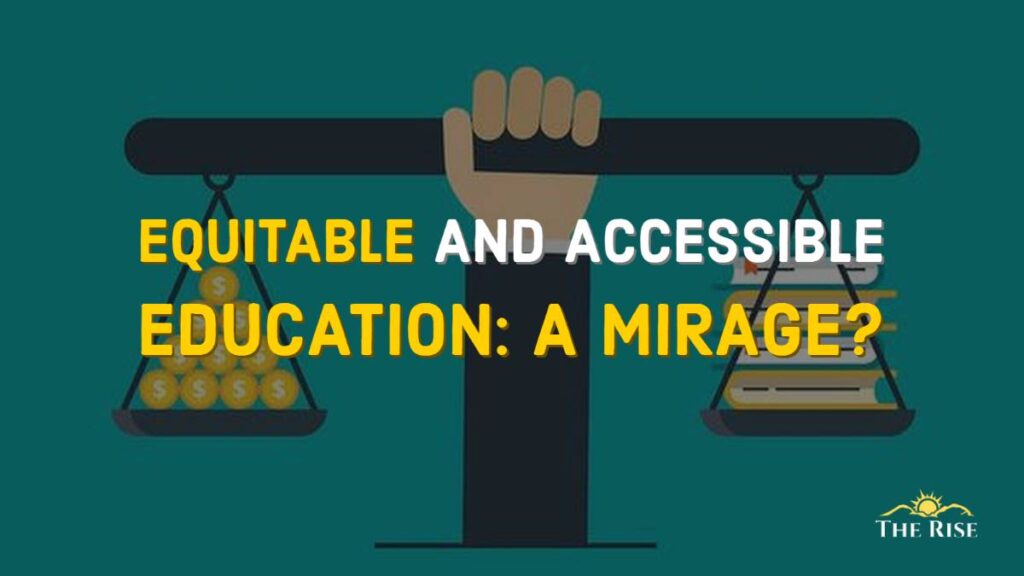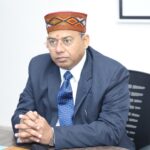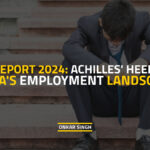Supreme Court has remarked limitations of students from poor sections of society in access to online education and exhorted for corrections. Juxtaposing Indian socio-economic conditions with the education model of the nations having significantly strong IT infrastructure and much better capabilities as compared to India is irrational. The penury coercing the poor to the extent of leaving the mainstream education has not only flouted the constitutional provisions regarding the right to education but also forbidden the talented ones to chip in for the good of humanity and civilization. In a country with around 1.3 billion population of varying economic stature, it is inevitable to holistically assess the feasibility of the so-called new normal of education, i.e., online education and blended mode of education before starting it.
The Supreme Court of India has raised serious concerns on the issue of digital divide in the context of online education in SLP no. 4351/2021 on 08th October 2021. Taking cognizance of the deprivation of education to the children belonging to poor families due to the cost of online education, the court exhorts to make online education accessible to all with equity. The three-judge bench has explicitly observed the consequences of digital divide upon the children belonging to Economically Weaker Sections (EWS) & Disadvantaged Groups (DG). These children either dropped out or could not pursue education because of their inability to afford internet access and computer, smartphone, laptop, etc., without which online education is not possible.
The Supreme Court order is full of indignation on the account of online education being confined to the children of the families that can afford it. This has questioned the whole orchestration of online education and the trumpeted ‘sabka saath, sabka vikaas, sabka vishwas’.
Faux pas of Academics
The court has graciously incriminated the system for the deprivation of destitute pupils from the new normal of education i.e. online mode. It is very unfortunate on the part of the academic community and academic governance for not being pragmatic enough in treating their students alike with respect to offering learning opportunities.
Also Read: When Schools look like the ‘Garden of Selfish Giant’!
Undoubtedly, few academics were disquieted with the way online education started rolling in the country without consideration of the severe digital divide and hugely varying socio-economic conditions. Since the spread of the pandemic and the closure of educational institutions, there are numerous writings in the public domain that demonstrate the worries of the academic community about the unequal access to online education.
Academic governance has to introspect and find answers to whether respective institutions were equipped for starting online education when it was mooted. The IT facilities for the preparation of digital learning material, the mechanism for its dissemination, and the online teaching facilities available to the teachers were also not assessed.
Also Read: Calibrate Crappy Education in COVID Aftermath
Soul searching is required as to why did the educational institutions not take feedback about the feasibility of online teaching mode before kicking it off.
The educational institution must do soul searching as to why did they not take feedback about the feasibility of online teaching mode before kicking it off. Juxtaposing Indian socio-economic conditions with the education model of the nations having significantly strong IT infrastructure and much better capabilities as compared to India is irrational.
Let us not lose sight of the fact that a large number of our education providers do not have their digital presence. But all institutions plunged into online education activities ignoring the extent of facilities available with their students and teachers. Surely, the digital mode of interaction is not a handicap for those from well-off families. Nevertheless, the penury coercing the poor to the extent of leaving the mainstream education has not only flouted the constitutional provisions regarding the right to education but also forbidden the talented ones to chip in for the good of humanity and civilization.
Also Read: Technological Transformation in Higher Education: Myths and Realities
Society trusts every act of teachers as the best for their students and any irresponsible action affects the future generations while also diminishing their sheen. Cardinally, the teachers should exalt the student interests and indiscriminately safeguard equitable access to learning opportunities for all. The court has propitiously triggered a discourse on the contribution of much-hyped online education. Unequivocally, students are bearing the brunt of this mode of teaching-learning-examination-evaluation process. Taking care of the voids created by limitations of the online mode being forsaken at the mercy of someone is not in the larger interest of society.
Teachers should exalt the student interests and indiscriminately safeguard equitable access to learning opportunities for all.
Digital Divide
Presently, the reach of the internet in India is not uniform across its whole territory. The scanty or no electricity is also another impediment to the serviceability of electricity-run IT gadgets across the country. International Telecommunication Union had earlier estimated that by the end of 2019 more than 51% of the global population will be using the internet. While in India, as per the reply to a question in the Parliament, the Telecom Statistics India – 2019 report states that there are 25.36% and 97.94% internet users in rural and urban India, respectively, among the total 636.73 million internet subscribers.
The internet subscribers in rural and urban areas are 227.01 and 409.72 million, respectively. National Sample Survey Office (NSSO) reports about the presence of a desktop/laptop/tablet/computer in one in every ten households in India.
Also Read: Blended Learning in Indian Higher Education: How Feasible is it?
National Broadband Mission, started on 17th December 2019, targets to provide every Indian village with a broadband internet facility by 2022. This will take care of the digital divide arising out of infrastructure deficiency. But special efforts of providing IT gadgets with enablers for internet access to poor children will overcome the challenge posed by the lack of IT gadgets and internet access due to the weak economic conditions of the families.
Way Forward
Going by the present scenario, it is discernible that online education has been progressing undeterred without much concern for those unable to take it. Thence the loss of learning opportunities has already occurred. A large number of impoverished ones had to leave the online education system for want of IT resources. At the same time, the instances of loss of job of the earning members in the families have incapacitated a sizeable number to afford the education expenses of their children.
Hitherto, there are two types of children who could not afford online education, either due to the unavailability of internet services in their region or due to the unavailability of IT gadgets for accessing it. Strategizing the bridging of the digital divide calls for huge investment for setting up internet infrastructure and providing the requisite equipment free to learners for enabling them to join online education.
Also Read: Quality Education: A Luxury or A Fundamental Right?
Offering free education to children of families in financial hardships as also envisaged by the statutory provision of the Right to Education may help. Also, the concerted efforts for providing learning opportunities in offline mode to those who suffered learning loss because of online education may help the deprived ones in coming back to mainstream education and overcoming knowledge gaps.
The penury coercing the poor to the extent of leaving the mainstream education has not only flouted the constitutional provisions regarding the right to education but also forbidden the talented ones to chip in for the good of humanity and civilization.
Also Read: Students Steering the Education Wheel through Stormy Virus
In the meantime, getting rid of online education and resorting to offline education having face-to-face learning following prescribed pandemic protocols shall help to make it accessible to the majority of children. In a country with around 1.3 billion population of varying economic stature, it is inevitable to holistically assess the feasibility of the so-called new normal of education, i.e., online education and blended mode of education before starting it. Further, involving all stakeholders, including teachers, students, parents, and regulators before taking all acceptable decisions on the methodology of imparting education should become the thumb rule to avoid any grudges in any part of the society.
Disclaimer: The views expressed in this article are of the author solely. TheRise.co.in neither endorses nor is responsible for them.
About the author
Prof. Onkar Singh is the Vice Chancellor of Veer Madho Singh Bhandari Uttarakhand Technical University, Dehradun, He has been the Founder Vice-Chancellor of the Madan Mohan Malaviya University of Technology, Gorakhpur (U.P.). He is a Professor of Mechanical Engineering at Harcourt Butler Technical University, Kanpur (U.P.).











A very well articulated article on a very relevant theme of extreme importance. The issues are many; access and affordability to the data and network connectivity is important but the devise is no less important. Many lack devices and those who who connect for their classes invariably use their smart phones rather than laptop, notebook or desktop. The efficacy of the varying devices in attracting attention and health of students are markedly different with balance tilting in favour of larger scree.
Absolutely correct.
Pingback: We, the Guinea Pigs of the World - TheRise.co.in